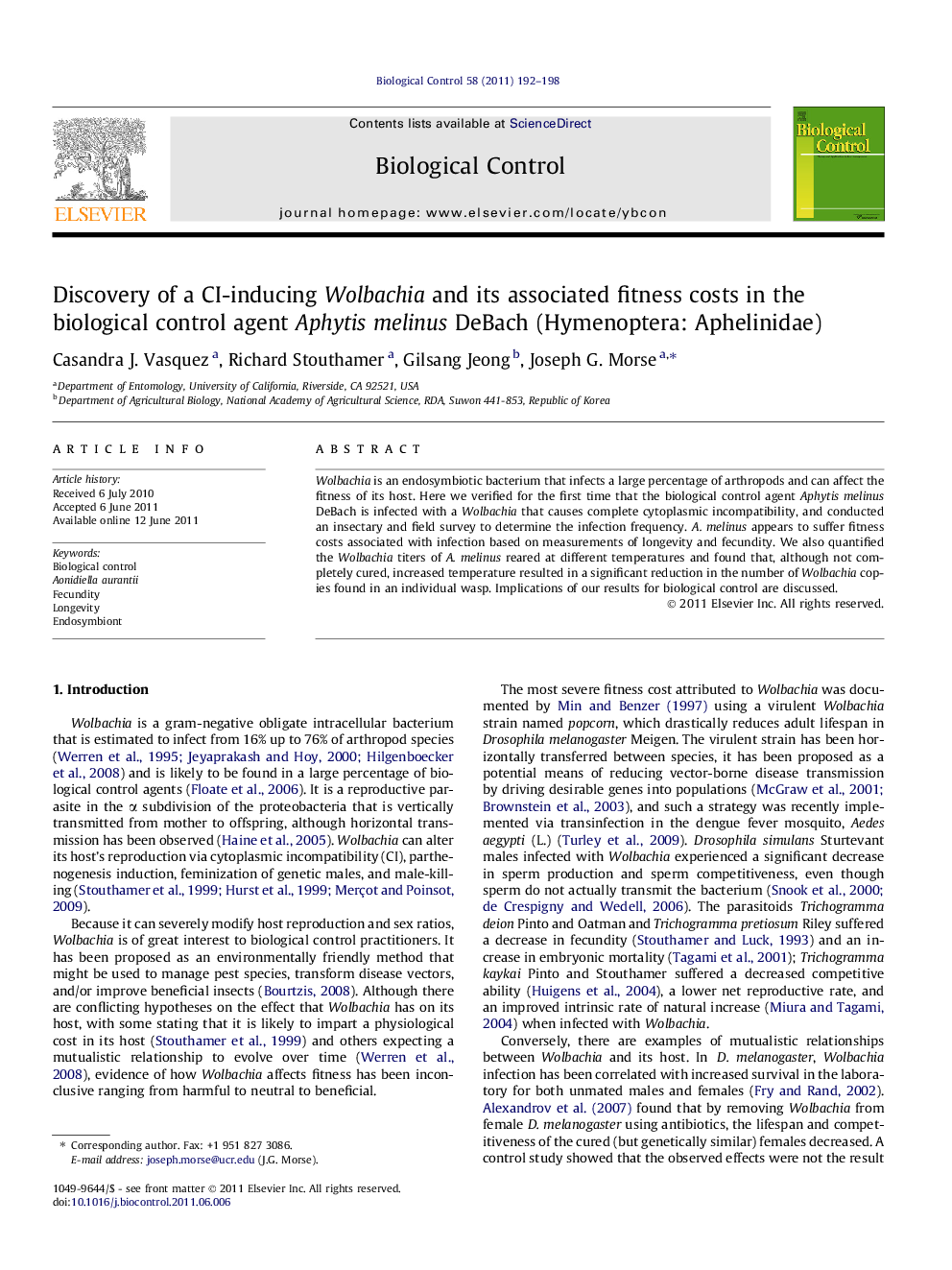| کد مقاله | کد نشریه | سال انتشار | مقاله انگلیسی | نسخه تمام متن |
|---|---|---|---|---|
| 4504249 | 1321082 | 2011 | 7 صفحه PDF | دانلود رایگان |

Wolbachia is an endosymbiotic bacterium that infects a large percentage of arthropods and can affect the fitness of its host. Here we verified for the first time that the biological control agent Aphytis melinus DeBach is infected with a Wolbachia that causes complete cytoplasmic incompatibility, and conducted an insectary and field survey to determine the infection frequency. A. melinus appears to suffer fitness costs associated with infection based on measurements of longevity and fecundity. We also quantified the Wolbachia titers of A. melinus reared at different temperatures and found that, although not completely cured, increased temperature resulted in a significant reduction in the number of Wolbachia copies found in an individual wasp. Implications of our results for biological control are discussed.
Effect of rearing temperature (three generations) on titer of CI-Wolbachia in Aphytis melinus.Figure optionsDownload as PowerPoint slideHighlights
► Herein we report for the first time that Aphytis melinus DeBach is infected with a Wolbachia that causes complete cytoplasmic incompatibility.
► Insectary and field surveys indicated that levels of CI-Wolbachia are high in California, USA, but have not reached fixation.
► Wolbachia infection in A. melinus results in fitness costs with respect to both male and female longevity and female fecundity.
► Although not completely cured, rearing at high temperatures reduced Wolbachia titers in A. melinus.
Journal: Biological Control - Volume 58, Issue 3, September 2011, Pages 192–198